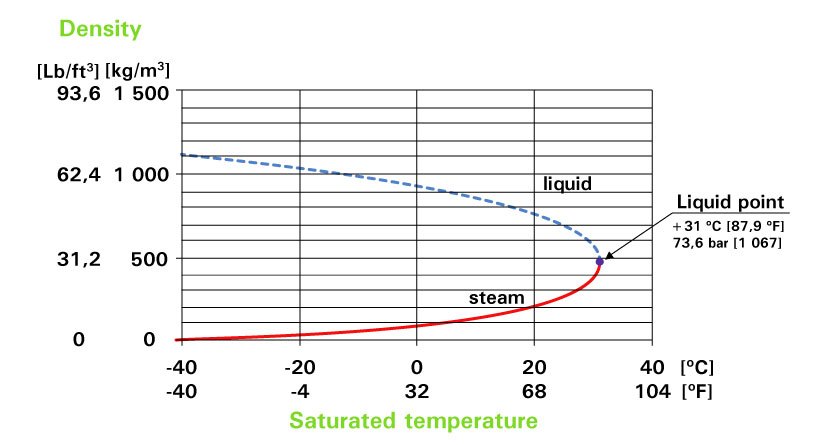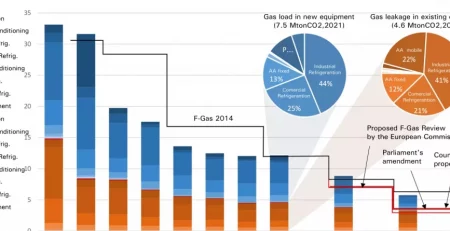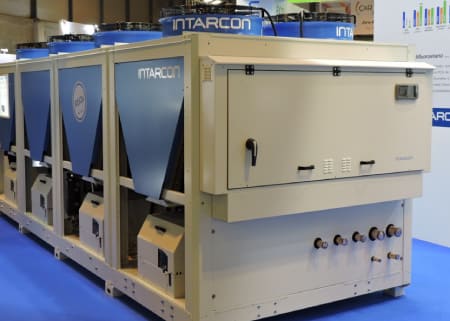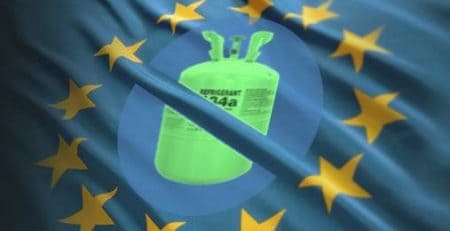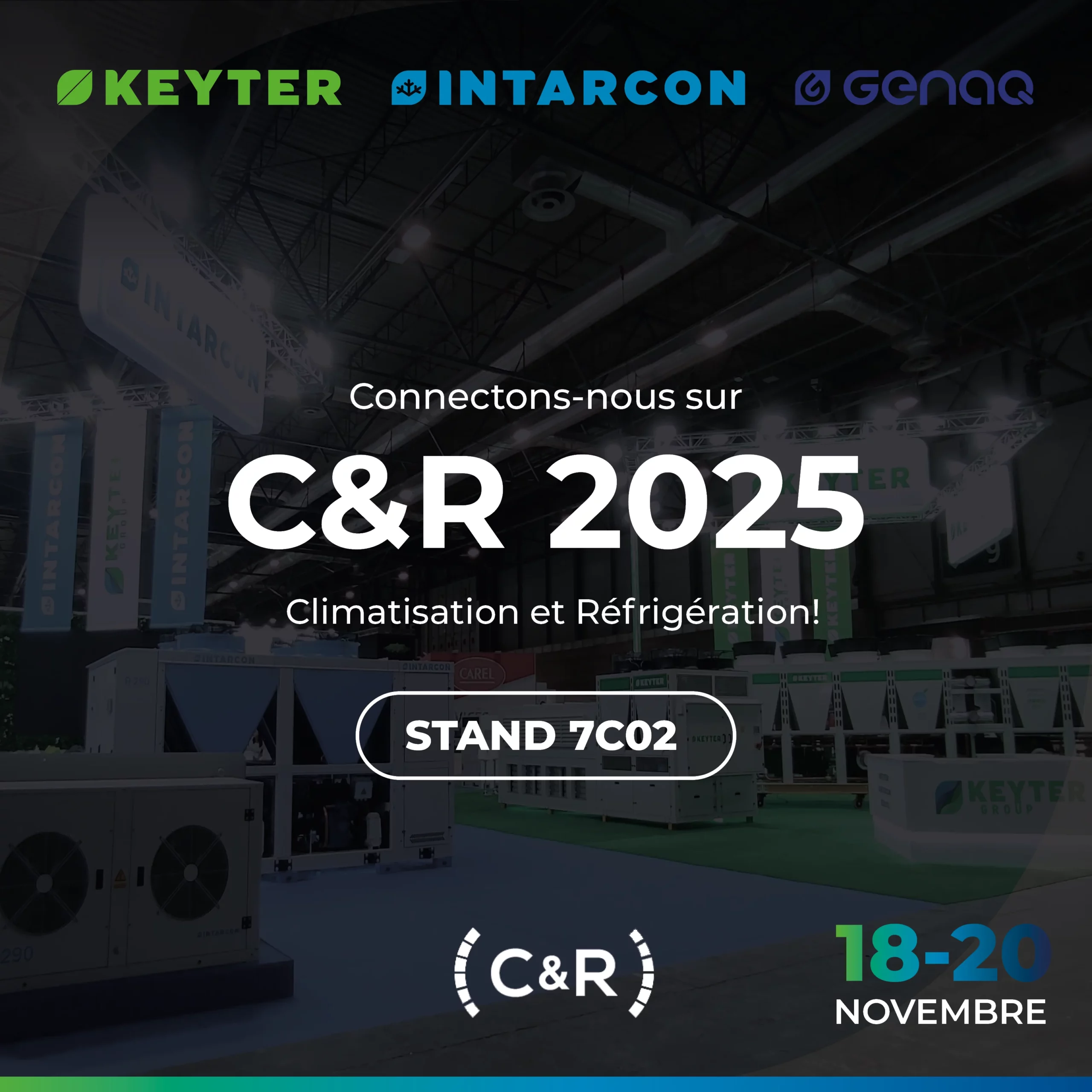R744 refrigerant
INTARCON2025-08-11T14:39:51+02:00Due to growing concerns about the harmful impact that fluorinated refrigerants can have on the environment, natural refrigerants have made a comeback, especially NH3 and CO2 used for industrial purposes at low temperatures. In this post we will talk about CO2 refrigeration.
Commonly known as R-744 when used as a refrigerant, carbon dioxide (CO2) has become one of the most popular natural refrigerants in recent times, although it should be noted that this technology is not new, as it was already commonly used over a century ago.
The popularity that CO2 has achieved recently as a refrigerant is due to its very low impact on the environment compared to HFCs (hydrofluorocarbons), which are under threat from current regulations (F-gas). CO2 does not damage the ozone layer (Ozone Depletion Potential ODP = 0) and it has a low impact on global warming (Global Warming Potential GWP = 1), taking this last value as a reference for determining the GWP of other gases. Also, the high efficiency of this gas means it has a lower indirect contribution to the global warming of the planet.
CO2, a good refrigeration alternative
CO2 is an odourless, colourless liquid that is heavier than air. Although it is necessary for life on earth, it is also a Greenhouse Gas (GHG) that can modify the environment if its concentration in the atmosphere increases significantly. It is a “high-safety” refrigerant, i.e. “non-flammable” and with a “low toxicity”.
CO2 was used as an early refrigerant before freons, but it quickly fell out of use due to its more complex technology. It has excellent thermo-physical properties, although it poses difficulties due to its low critical temperature value (30.978°C) and its high pressures. It has a volumetric capacity that is much higher than that of conventional refrigerants.
Advantages
This gas has a high thermal conductivity and high density in the gaseous phase, which results in good heat transfer in evaporators, condensers and gas coolers; so these characteristics allow smaller units to be selected, compared to those that use CFCs, HCFCs and HFCs. Also, due to the fact that it has a low pressure drop, the diameter of the pipes can be reduced.
CO2 is a good alternative for both commercial and industrial refrigeration, but certain safety measures must be considered. It must be taken into account that CO2 cannot be detected through smell, therefore, as it is denser than air, it can displace oxygen to limits that are harmful to health. As it gives off no odour, it may be the case that, if there is a leak, the technician is not able to detect it. Such characteristics make it vital to pay special attention to leak detection, having an alarm system that can detect and warn in time of the presence of CO2 and having an emergency ventilation system.
Furthermore, the high pressure of the gas when it leaks will cause an explosion, with splashes of refrigerant with residues in solid form at very low temperature at the speed of sound. Please note that CO2 should never be charged in liquid form when the system is at a lower pressure than the triple point (5.2 bar). If you were to do so, the liquid entering the system would suddenly change state, turning into dry ice and remaining in that state inside the system.
Limitations
Unlike other natural refrigerants, CO2 cannot adapt to any unit, either old or current. Units must be designed for the characteristics of this gas and for the high pressures it must withstand. Lastly, in relation to hydrocarbons, CO2 has the advantage of being able to be used in installations without any charge limitation.

What is the history of CO2 as a refrigerant?
CO2 has been known since the beginning of mankind, existing in the atmosphere at a concentration of 0.04% by volume.
As a refrigerant, it began to be used in the 19th century with mechanical refrigeration. In 1881, Carl Linde built the first machine using CO2. Later, compressors were developed to work with CO2 and double-stage systems. Its use became increasingly widespread.
After the First World War, synthetic gases were developed, which made it possible to use less robust elements with greater efficiency. This is where the decline of CO2 as a refrigerant began, with CFC gases taking over. CFC refrigerants dominated the world market for 50 years, until 1974, when it was discovered that the use of these substances was depleting the ozone layer. That is when HFC refrigerants were developed, which are still used today. However, they contribute to global warming and, therefore, their use is limited.
Why are we considering using CO2 in refrigeration systems?
As a result of the Kyoto Protocol, agreed by the United Nations Framework Convention in order to fight climate change, the goal is to reduce the emissions of six greenhouse gases (CO2 , CH4, N2O, HFC, PFC and SF6).
Among the measures taken, as well as the regulations created to achieve these goals, the F-gas Regulation was implemented in 2006, with subsequent even stricter updates. Its aim is to reduce HFC gas emissions to 1/3 by 2030.
To achieve these goals, restrictions on use and prohibitions have been set at the European level. At the same time, at state level, taxes have been imposed on the use of refrigerants in order to encourage the use of other refrigerants with a lower environmental impact.
If you look at refrigerants with GWP levels < 150, the majority are flammable (HFO), toxic (NH3) or work at high pressures (CO2).
Thermodynamic properties of CO2
The main difference of CO2 compared to other refrigerants is the operating pressure at which it works. However, this makes it a high-density gas, resulting in a greater cooling effect with a low circulating mass.
The enthalpy of evaporation per displaced cubic metre (kJ/m3) is much higher than in other gases. This results in smaller compressor displacements and smaller pipe diameters.
Pressure-enthalpy diagram (log P-h) (Mollier diagram)
When working with CO2 for refrigeration, an expanded P-h diagram must be used, i.e. in addition to the standard vapour, liquid-vapour and liquid regions that can be seen in the Mollier diagram of any conventional refrigerant, the region below the critical point (supercritical phase) and the regions below the triple point must also be represented.
The following chart shows the physical state of the CO2, according to the pressure (P) and the enthalpy (h). By modifying these two variables, four clearly differentiated phases can be obtained: solid, liquid, vapour and supercritical fluid; as well as three other intermediate two-phase mixture regions: solid-liquid, solid-vapour and liquid-vapour.
With respect to other refrigerants, it is striking that even with very low temperatures we obtain high saturation pressures (e.g. 0°C ⟹ 35 bar). Please note the following points from the phase diagram:
- Critical point: 30.98°C and 73.77 bar ⟹ phase change without condensation
- Triple point: -56.56°C and 5.187 bar ⟹ The liquid phase can only exist at a pressure above 5.187 bar, then the expansion of liquid at a lower pressure will produce dry ice (solid).
Mollier diagram for common use in refrigeration
A simplified Mollier diagram is commonly used to represent refrigerating machine cycles, where the region that contains solid or solid-liquid (left area) and the region below the triple point (< 5.2 bar) are not represented. Therefore, the diagram for common use in refrigeration is only represented by the regions that contain liquid and vapour (or liquid-vapour), which is very similar to the diagram of any other refrigerant in daily use but with much higher pressures: being able to work below the critical point or not will define the type of unit and operating mode, resulting in completely different systems. In air-cooled refrigeration units with ambient temperatures below approx. 25°C, it is possible to work in a subcritical cycle, whereas at higher temperatures, it is necessary to work in a transcritical cycle.
 What happens in the critical region?
What happens in the critical region?
As we approach the critical point, the densities of the liquid and the vapor tend to the same value, the difference between liquid and vapor disappearing when the critical point is reached. A region with high density appears.
Being able to work below the critical point or not will define the type of unit and operating mode, resulting in completely different systems. In air-cooled refrigeration units with ambient temperatures below approx. 25°C, it is possible to work in a subcritical cycle, whereas at higher temperatures, it is necessary to work in a transcritical cycle.
The most common applications, the advantages, disadvantages and the regulations for CO2 as a refrigerant
The most common applications of CO2 refrigeration:
- Commercial and industrial refrigeration.
- Transport refrigeration.
- Compact systems.
- Supermarkets.
- Direct, cascade and indirect systems.
The advantages of using CO2 as a refrigerant:
- ODP = 0, GWP = 1.
- It is non-flammable.
- High performance, low energy consumption.
- It has a high heat transfer coefficient.
- It has no long-term side effects.
- This gase has a low toxicity (it is only dangerous in high concentrations).
- It is cost-effective, and there is no risk of obsolescence.
- High availability, as it is obtained as a by-product of various processes.
- It can be mixed with POE, PAG and PVE lubricants.
Disadvantages of using CO2 as a refrigerant:
- It works at higher temperatures and pressures than HFCs and other refrigerants.
- In the event of leaks, CO2 accumulates on the ground, displacing the air; and as it is odourless, it cannot be detected by smell.
- CO2 is only suitable for new systems. As it is a high-pressure and low critical temperature refrigerant, it is not suitable for converting existing fluorinated refrigerant systems.
- The system cost is high.
CO2 regulations to be taken into account:
- Regulation (EU) no. 1005/2009 of the European Parliament on substances that deplete the ozone layer.
- Regulation (EU) no. 517/2014 of the European Parliament and of the Council of 16 April 2014 on fluorinated greenhouse gases. “F-gas Regulation”.
- International Electrotechnical Commission (IEC 60335-2-89). Refrigerant charge in refrigerated cabinets.
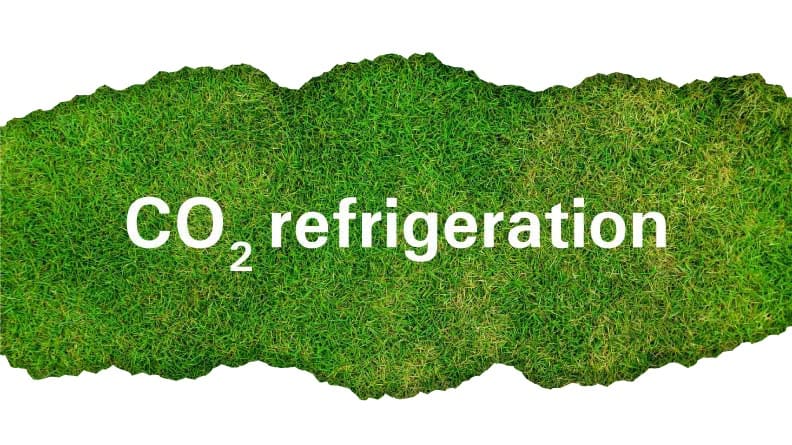
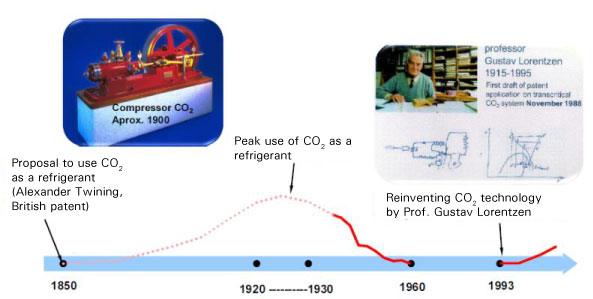
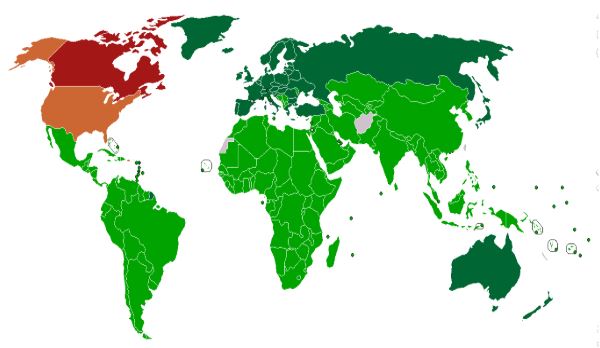

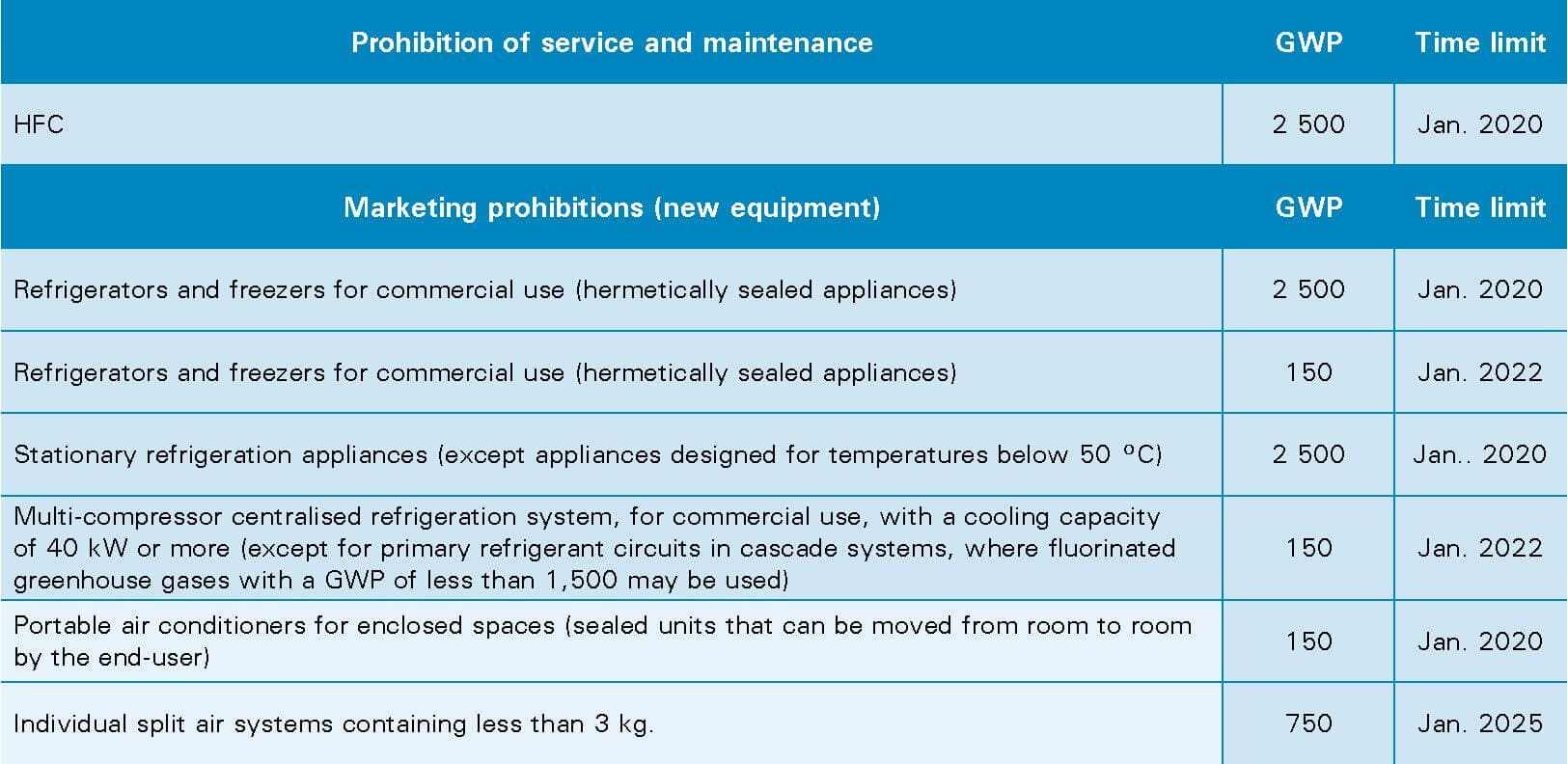
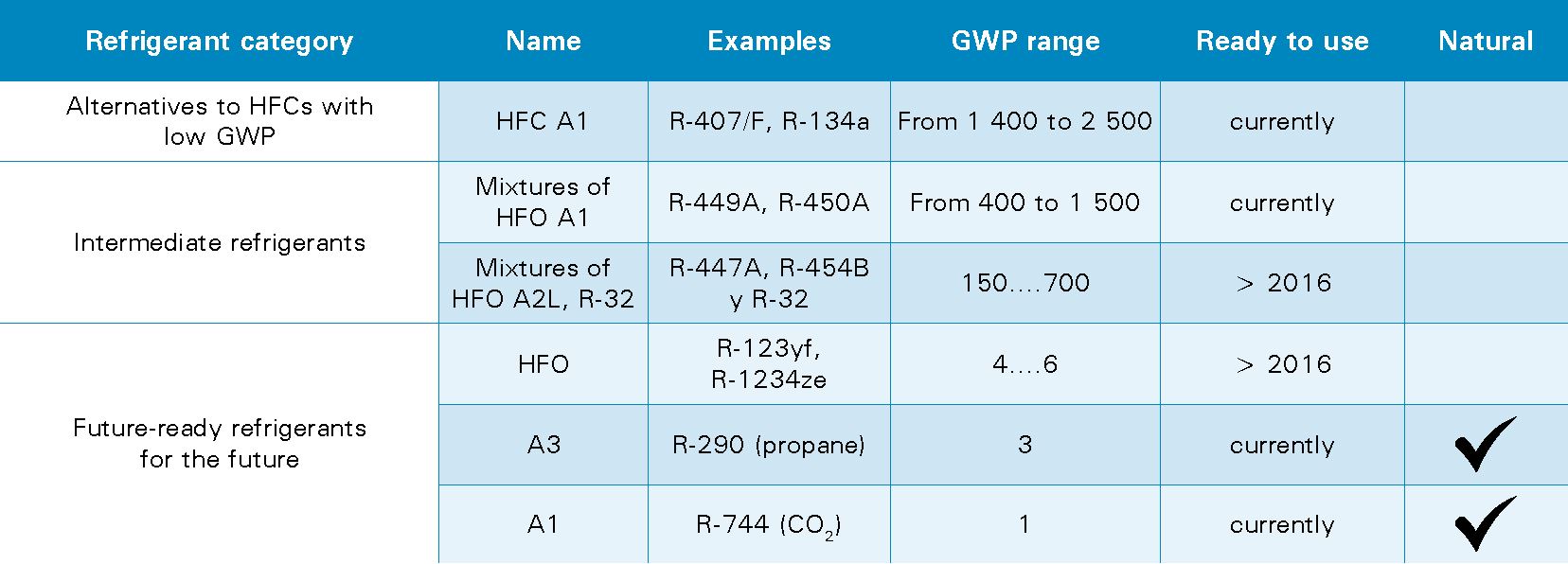

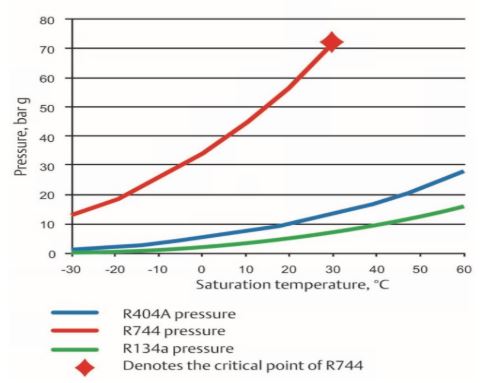
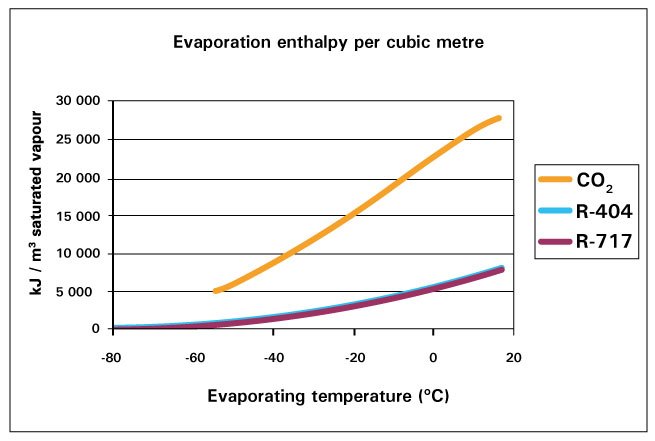
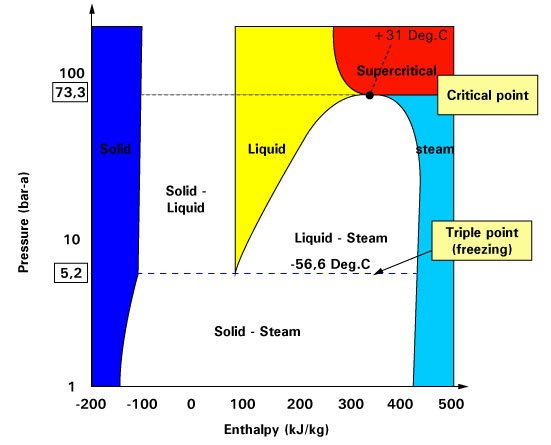
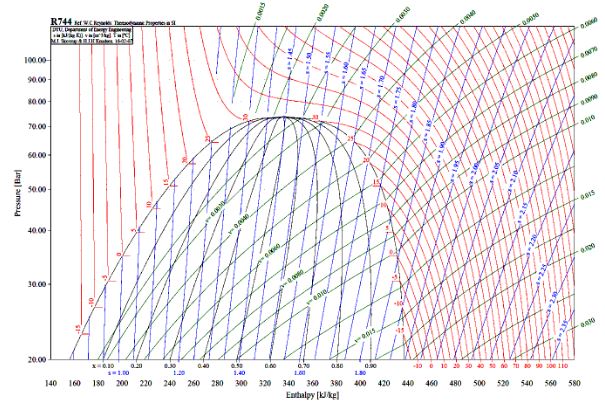 What happens in the critical region?
What happens in the critical region?